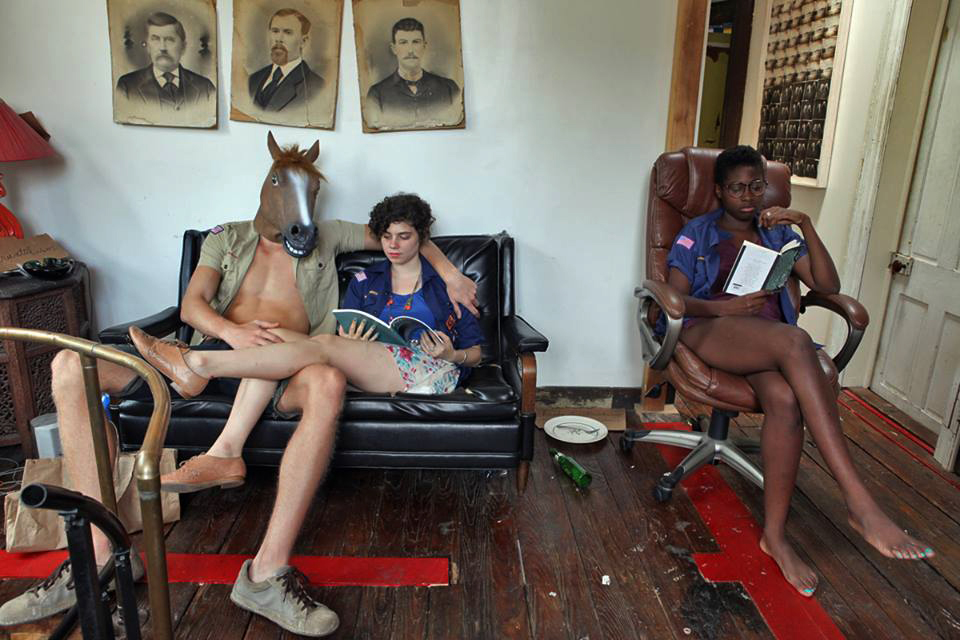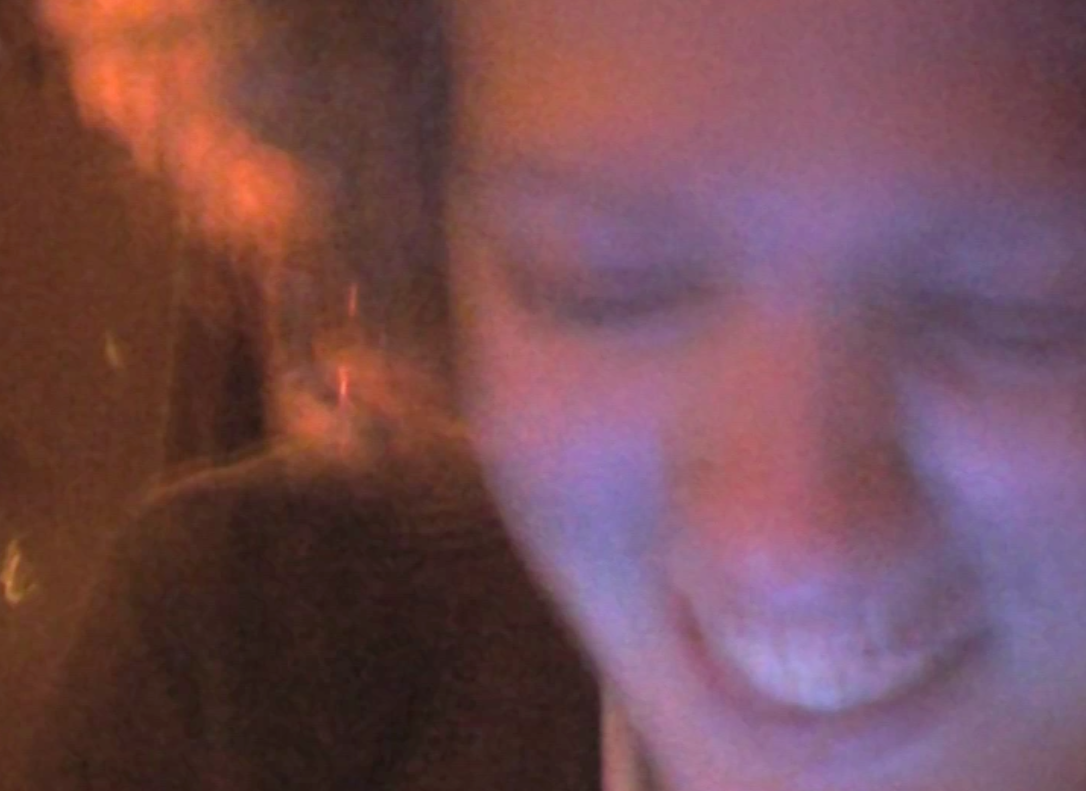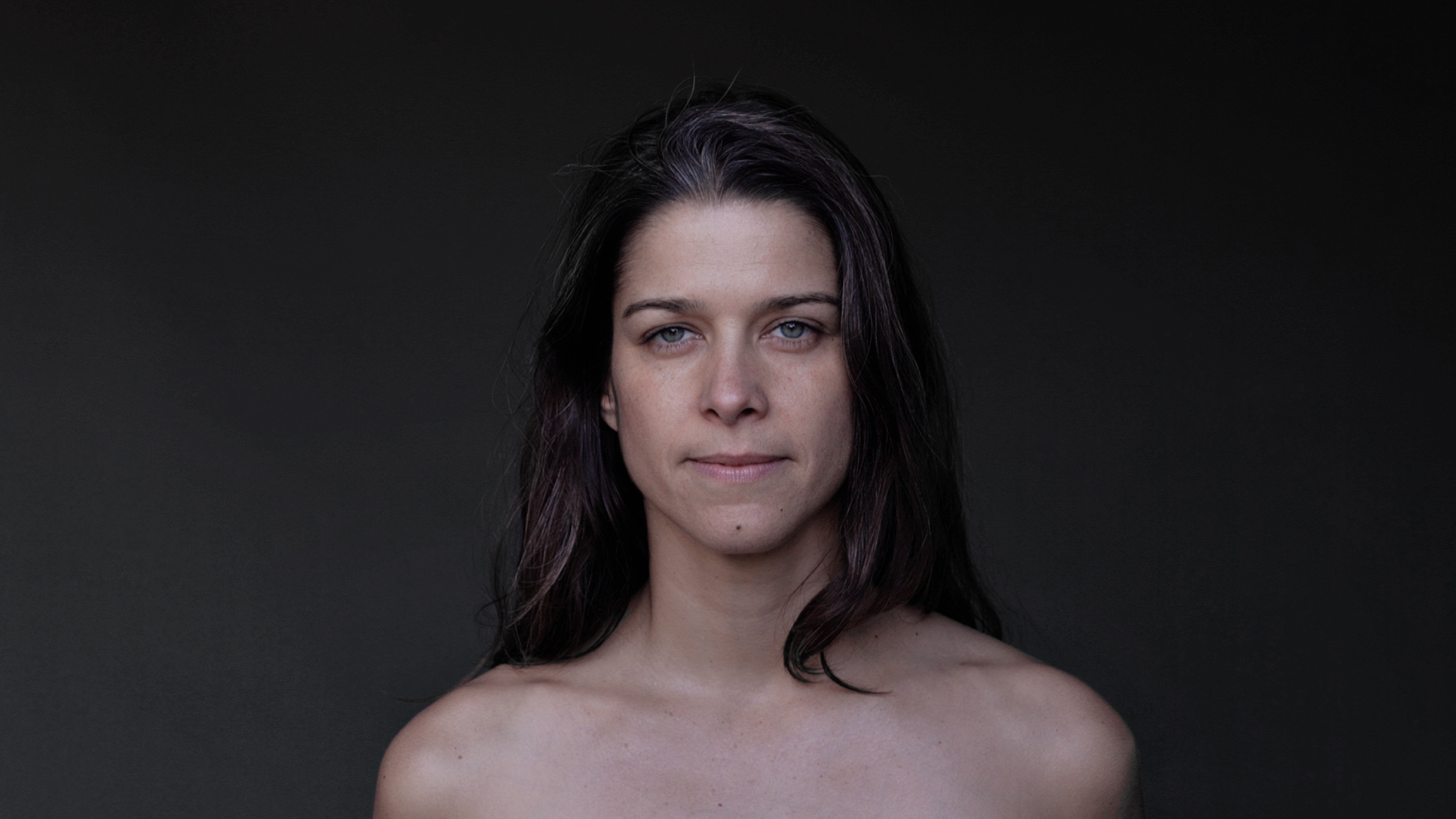
The Screening Room: moving the ground in video and poetry

Rona Yefman’s “The Reading Room” video.
Visual poetry is one of the newest genres in the art world. Combining text or voice with the moving image is on the frontier, just where Rhonda Mitrani wants her space, The Screening Room, to be. That’s why the first project after receiving a Knight Arts Challenge grant to expand the new media landscape in Miami is called “Poem: Videos.” It opened May 7.
Curated by one of the most interesting video and performance artists to have emerged in Miami in recent years, Antonia Wright, “Poem” is a surreal and immersive experience – it would be a disservice to call it an exhibit in the traditional sense. Wright asked six local and national artists – most of whom are known for video, but not all – to make a piece based on one of her poems. The result is a group of six videos all running two minutes and 37 seconds, which is the time it took Wright to read her poem; narrative and abstract works that fill the gallery accompanied by Wright’s recorded audio.

Justin H. Long’s wave video projected on the floor.
“It’s a little experimental, this is a really new field,” says Wright in the darkened space during the opening. She explains the origins of the exhibit, which started with an encounter on the street in New York City. As Wright was outside smoking a cigarette, a woman walked up and assumed she had come across a fellow artist, and then proceeded to tell Wright how to live and survive as an artist. Wright turned it into a poem, “Advice from a Modern Artist.” The first lines read:
“You must be an artist, only artists smoke in New York City anymore. She exhales up my nose and drops me in her studio like keys on the counter.”
Wright decided to challenge the traditional notion “of the poetry reading.” She would read her work, but she would only exist aurally; the visuals would come from other artists, with their video interpretations of the poem.

Still from the video by Daniel Joseph.
Brooklyn-based Daniel Joseph created an ethereal video, where an innocent-looking woman’s face comes in and out of focus, as does the indeterminate background scenery. Local Justin H. Long made an even more abstract piece, of black-and-white rolling waves, which are projected on the floor and halfway through, switch direction.
Miamian Natasha Lopez De Victoria, part of the TM Sisters duo but here going solo, incorporated the text, scrolling it across the middle of the video making it front and center.
Israel-born and New York-based Rona Yefman delivered a narrative video, with an ethnically mixed group, sometimes in masks, sitting around a decidedly untidy room talking – and reading.
Well-known New York-based video portrait artist Matthu Placek, whose filmed subjects have included Yoko Ono and Cindy Sherman, not surprisingly decided to make a portrait video, of Wright herself. She is reading her poem – but the audio is backwards.

Video portrait of Antonia Wright by Matthu Placek.[/caption]
The poem in the end is indeed the basis for this exhibit, but you may or may not comprehend it in the installation. As Wright says, poetry is a form that takes on new meaning each time it is read aloud. In this case, it takes on new, visually inspired interpretations as well.
According to director Mitrani, this was a perfect exhibit to launch the Knight-funded series. “One of the reasons I founded The Screening Room (TSR) is to give artists, local and non-local, the opportunity to take a risk with an idea. …I think Antonia Wright was courageous – she wrote a poem and invited six video artists from around the country to interpret her poem with a video, thus challenging the traditional poetry reading. The idea turned out to be beautiful and interesting.”
Mitrani proposed her grant application to fill a void. “There happens to be a great selection of cinema houses here in Miami already. [But] I realized there was no alternative space in Miami solely dedicated to the moving image.” By moving image she means a space that is more than a room with a screen. “Video installations, lectures, gatherings, film screenings, works in progress, production shoots – the moving image is the common thread.”
In other words, TSR aims at diverse programming. For example, “two weeks ago we hosted an evening with the Wolfson Museum (Archives) and Barron Sherer,” she says. “We viewed archival footage from the 1950s through the ’70s on 16 mm, with accompanied ambient sounds by David Brieske.” Says the Miami native, whose sister Dina runs the photography-focused gallery next door, “for me there was no better way to revisit Miami’s history than to see it through Barron’s creation. I hope to turn that program into a series.”
But these programs won’t be hastily produced. “The video installations entail a lot of technical planning, so we will host two, possibly three big ones a year,” says Mitrani. “This one currently on exhibit has three projections and three monitors. We are very thoughtful with how the work is curated and installed. Each exhibition has its art talk with possible panel discussions about themes related to video art – the landscape of topics for video art is vast because it is still a relatively new medium.”
While Mitrani wants to exhibit local and non-local artists, emerging and established, the emphasis is on experimental. “Again, Wright’s show is a great example of an idea that was cooking for so long – an experiment of sorts that proved successful,” she says. “It was great to exchange ideas with Antonia, and it’s definitely a team effort, since I am not a typical gallery. I am an alternative art space. I don’t represent artists. I provide a venue for video artists to take seriously – so they can come and play.”
“Poem: Videos” runs through August 1 at The Screening Room, 2626 N.W. 2nd Ave., Wynwood; www.thescreeningroom.com.
Recent Content
-
Artsarticle ·
-
Artsarticle ·
-
Artsarticle ·
